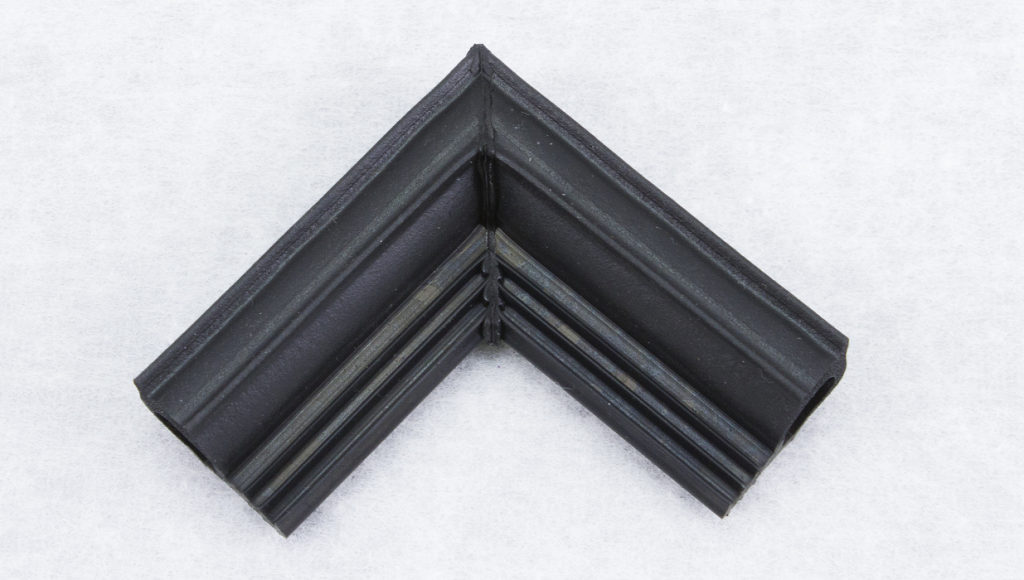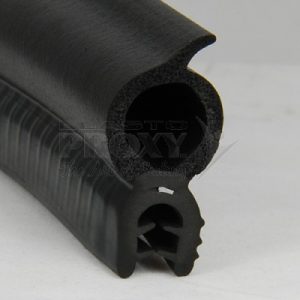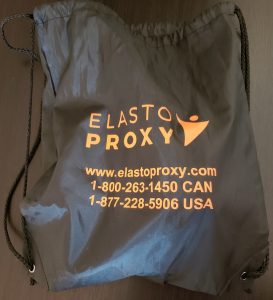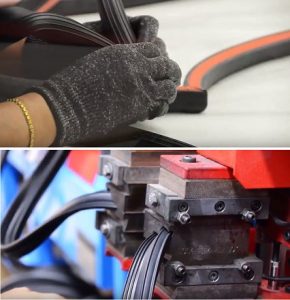Dimensional Tolerances for Rubber Products
Dimensional tolerances for rubber products are allowable variations in part or material size. They’re expressed as plus or minus values, or as a range of measurements. During the seal design…
Dimensional tolerances for rubber products are allowable variations in part or material size. They’re expressed as plus or minus values, or as a range of measurements. During the seal design…
Finished gaskets follow a formula. Seal design begins with compound, hardness, and profile selection. Custom seals and gaskets that account for these factors can fill the gap, withstand the environment,…
There many enclosure gasket types. What's the right choice for your application? Elasto Proxy custom-fabricates seals, gaskets, and insulation for enclosures that house machinery and equipment. These industrial rubber products…
Elasto Proxy is AS9100D and ISO 9001:2015 CertifiedElasto Proxy, a global supplier of rubber and insulation products, is now AS9100D and ISO 9001:2015 certified. CMA Quality International, an ANSI-ASQ accredited…
Better bonded gaskets improve quality and perceptions of quality. They reduce labor costs and support sales, too.

Finished gaskets need strong bonds to provide reliable sealing and insulation. In applications where rubber gaskets are visible, bonds that look better also suggest higher product quality. Buyers of specialty vehicles, commercial ovens, and electrical enclosures (just to name a few) don’t want to see bonded gaskets that look like they’re ready to pull apart in the corners or that need touch-ups.
Even in applications (such as HVAC systems) where finished gaskets are hidden, failure is expensive. Replacing the rubber seal in an air conditioning unit may cost more than you realize. In addition to paying for a replacement part, there are direct labor costs. Indirect costs including traveling to and from the job site, scaling ladders, pulling and replacing panels, and completing paperwork. Over time, it all adds up.
Gasket bonding may seem simple, but it’s skilled labor. You can buy your bonded gasket equipment, but machines don’t come with expertise. Even in an age of digital manufacturing, some activities still require craftsmanship. Plus, some bonding methods require cuts that you don’t have the equipment to make. You can try using guillotine saws or hand tools, but you can’t match water jet cutting. (more…)
Service truck bodies need five types of rubber parts: fender flames, bulb trim, rubber mats, anti-slip grip tapes, and rubber bumpers. Service trucks bring tools to the repair site so…
 Do you need to seal rounded corners against wind, water, dust, or dirt? Bulb trim seals are industrial rubber products that provide sealing and insulation for machine doors, vehicle hatches, and equipment enclosures. They’re designed to seal rounded corners and have separate bulb and retainer sections. Each of these sections can use a different material and have a different durometer or hardness.
Do you need to seal rounded corners against wind, water, dust, or dirt? Bulb trim seals are industrial rubber products that provide sealing and insulation for machine doors, vehicle hatches, and equipment enclosures. They’re designed to seal rounded corners and have separate bulb and retainer sections. Each of these sections can use a different material and have a different durometer or hardness.
With bulb trim, the bulb section compresses to form a seal when the door, hatch, or enclosure is closed. The trim or retainer section attaches to a flange or substrate. To choose bulb trim for your application, you need to specify the bulb size, bend radius, and flange thickness. By choosing the right bulb size, you can avoid over-compression. The right bend radius and flange thickness help to avoid kinking and leakage. (more…)
 Do you need thermal, acoustic, or thermal-acoustic insulation for forestry, mining, construction, or other types of mobile equipment? Maybe you need cabin flooring or floormats instead. The Elasto Bag, a sack full of samples from Elasto Proxy, contains sealing and insulation that you can see for yourself and hold in your hands. It’s easy to request an Elasto Bag, but what’s inside when you get it?
Do you need thermal, acoustic, or thermal-acoustic insulation for forestry, mining, construction, or other types of mobile equipment? Maybe you need cabin flooring or floormats instead. The Elasto Bag, a sack full of samples from Elasto Proxy, contains sealing and insulation that you can see for yourself and hold in your hands. It’s easy to request an Elasto Bag, but what’s inside when you get it?
The Elasto Bag contains at least nine samples of sealing and insulation. (We can also include samples of edge trim, bulb trim, or D-shaped profiles with adhesives if you need them). Let’s take a look at what’s inside the Elasto Bag so that you’ll understand what you have or can get. Along the way, you’ll see links where you can download product specifications. (more…)
Vibration dampers dissipate the energy that causes resonant vibrations in built structures. Vibration, a back-and-forth movement or oscillation, produces structure-borne noise in machine enclosures, engine bays, generator sets, heavy trucks,…
 Cold bonding for finished gaskets joins cut lengths of rubber without the use of heat. This bonding technique isn’t performed under low-temperature conditions but is manual process that requires a brush and glue. By contrast, injection molding is a semi-automated process that uses a C-press machine with a heated barrel, metal plates, and tons of pressure. To join cut lengths, uncured rubber is used.
Cold bonding for finished gaskets joins cut lengths of rubber without the use of heat. This bonding technique isn’t performed under low-temperature conditions but is manual process that requires a brush and glue. By contrast, injection molding is a semi-automated process that uses a C-press machine with a heated barrel, metal plates, and tons of pressure. To join cut lengths, uncured rubber is used.
By understanding how these joining processes work, engineers can make better decisions about which types of finished gaskets to choose. It’s also important to understand the advantages of disadvantages of each bonding technique. In this week’s article, we’ll compare cold bonding with injection molding in terms of capabilities, costs, and quantities. (more…)